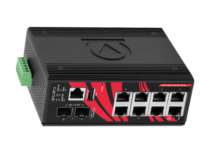In a world where uninterrupted connectivity is the most necessary thing, Distributed Antenna Systems (DAS) have emerged as a significant solution for large-scale venues and commercial buildings. As the proliferation of 5G brought transformative promise, it has real challenges. According to a U.S. Department of Homeland Security report, 5G networks are projected to cover one-third of the world’s population by 2025, offering quick speed, low latency, and improved device capacity than 4G.
This widespread expansion fuels smart infrastructure, IoT inventions, and even real-time applications like autonomous systems, but it also creates coverage and reliability issues, especially indoors. Here’s where DAS shows its excellence. If it is a high-rise building or an underground space, DAS provides a persistent and high-quality connection by adding a network of spatially distributed antenna nodes. As enterprises extend and urban planners come up with smarter solutions, DAS is no longer just an option; it’s the foundation of next-gen connectivity.
Latest Innovations in DAS That Support Future Connectivity
Whether it’s a stadium, an airport, a hospital, or a tall office tower, Distributed Antenna Systems (DAS) step in to deliver strong cellular signals and smooth communication where conventional cell towers often fail. In straggling venues like stadiums or hospitals, the thicker walls and energy-efficient glass doors hinder signals from reaching in properly.
A DAS primarily connects this gap by expanding powerful signals in an even way, which confirms seamless voice and data communication. Operators and manufacturers are incessantly making efforts and coming up with breakthroughs to make DAS more resilient and agile. Here are some innovations that we’ll experience in the coming years.
- 5G-Ready DAS: This type of distributed antenna system basically bridges the gap of enterprise-grade connectivity. Increasing demand in healthcare, commercial, and smart infrastructure increases the deployment of DAS and small cells. A recent market analysis predicted that the market of 5G-ready DAS will explode from around USD 14.8 billion in 2025 to more than USD 119.7 billion by 2034. Recent advancements, such as the hybrid DAS platform, drive the adoption. Moreover, BTI Wireless launched its latest innovation DAS platform, which combines traditional distributed antenna systems with private 5G networks. It enables immediate deployment and seamless integration using off-air capture and eCPRI baseband support. This overlap of advanced hardware and ascending market demand indicates why 5G-ready DAS is an investment opportunity that enterprise stakeholders can’t overlook.
- Digital DAS Platform: The Digital DAS platform provides resilience, adaptability, and network management capabilities that are integral in this fast-evolving world. Recently, digital platforms have become immensely popular for deployment in military purposes. Here are a few examples of how it’s been adopted in various important sites.
- The Department of Defense in the U.S. started the initiative for advancing private 5G deployments at its installations in October 2024 for the modernization of connectivity. This move completely depends on agile infrastructure such as digital DAS for reliable indoor signal delivery and mission-critical communication.
- Recently, CommScope teamed up with the Government Business Council to roll out a DAS-based connectivity system. They even shared that robust digital DAS coupled with fiber-based infrastructure is essential to fully realizing 5G’s promise within government environments.
These developments demonstrate why digital DAS platforms are becoming a linchpin of modern enterprise and public-sector network strategies, providing outstanding performance and flexibility across critical situations.
- Confluence with Edge Computing: Edge computing offers processing data near its source by reducing latency, saving bandwidth, and enhancing decision speed. This improves connectivity by addressing the challenges in critical situations like industrial automation and smart infrastructure. A suitable example can be the recent deployment of edge computing with DAS in Norway. It utilizes Distributed Acoustic Sensing, amalgamated with edge computing to identify and mark vehicles in real time.
- Hybrid DAS Solutions: Hybrid DAS solutions are becoming widely famous because they combine the strength of a passive solution with the modern architecture. By integrating these, it provides trustworthy and high-performance connectivity in complex environments were resilience and future readiness matter most. Here’s how the real world is adapting it.
- The Department of Enterprise Services is deploying DAS systems in multiple critical places, such as Columbia, Plaza, Natural Resources, and Transportation parking garages. This provides immediate cellular and radio coverage in an emergency.
- Recent RoF-based DAS research illustrates how indoor systems can simultaneously deliver 5G mmWave and emerging 6G terahertz services over a single optical link.
These advancements mark that DAS is an essential part of modern connectivity, and the world will only notice more efficient and innovative DAS solutions in the future.
Why is DAS Demand Ascending in Next-Gen Connectivity?
DAS, being the only convenient solution to provide a reliable and constant connection in harsh environments, is widely acknowledged as the backbone of next-gen connectivity. Here’s why.
- Addressing Indoor Connectivity Challenges: As mobile usage is increasing every year, businesses are pointing out that depending on traditional cell towers alone is no more an option. Around 70% to 80% of mobile data is consumed indoors in India, still it struggles with patchy coverage. This issue compels TRAI to launch a voluntary star-rating system to evaluate “digital readiness” in properties, similar to essentials like power and water supply.
- Smart Infrastructure Expansion: AI-enabled stadiums, next-gen campuses, and utility spaces are expanding massively worldwide, demanding high capacity and constant internet connections for smoother activity. Recently, Huawei introduced its Intelligent Stadium Solution in October 2024, aiding digital and intelligent alteration of stadium campuses. These state-of-the-art advancements are highly reliant on DAS systems for better connectivity.
- Stricter Norms for Public Safety: Regulatory bodies are increasingly stressing that new and existing buildings provide reliable in-building radio coverage for emergency purposes.
These advancements clearly indicate the exponential demand for DAS systems in next-gen connectivity.
Final Thought
Distributed Antenna Systems are no longer a case for niche deployment; they are silently establishing the foundation of next-gen connectivity. With rapid 5G proliferation and immense demand from enterprises for high-quality and constant internet coverage, DAS provides a great technical foundation, as well as giving the business opportunity investors seek.
Source: https://www.researchnester.com/reports/distributed-antenna-system-market/1841


















